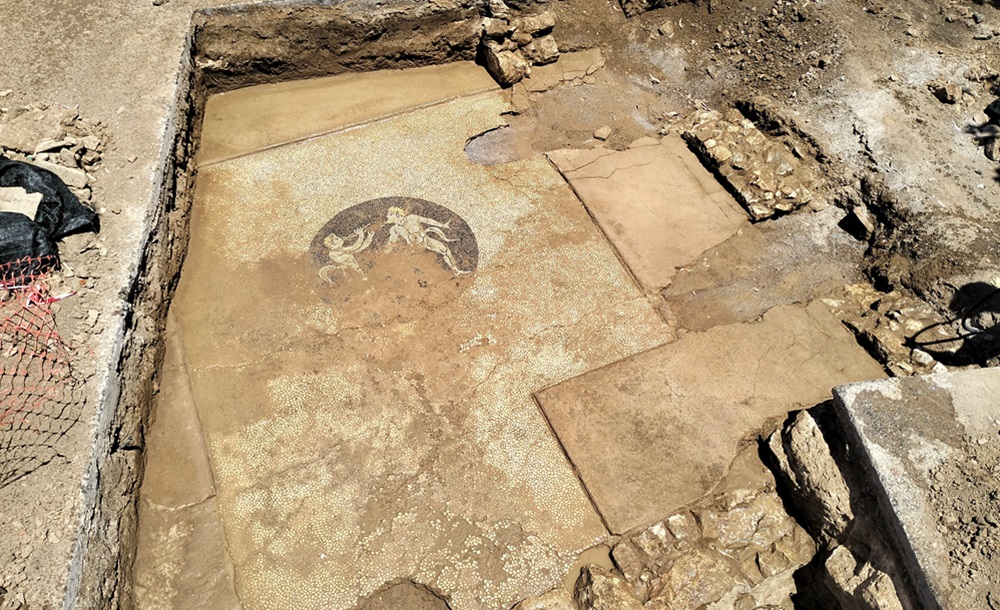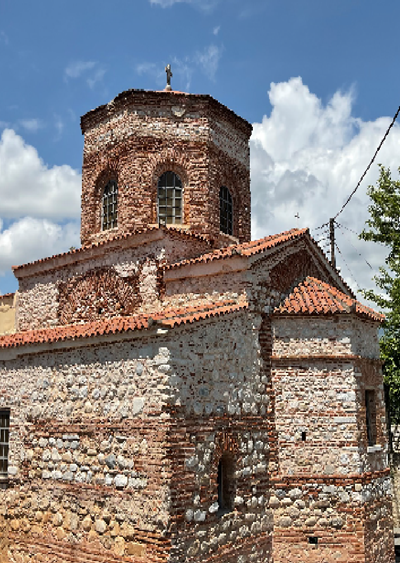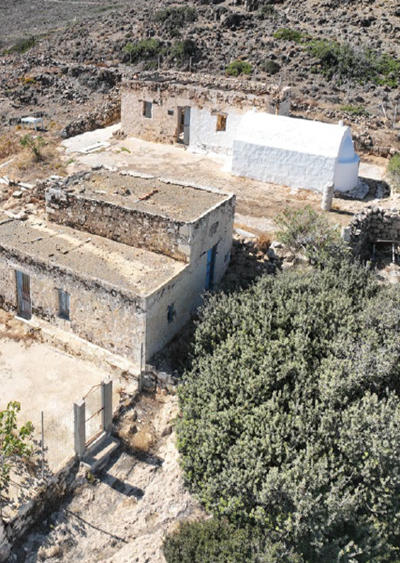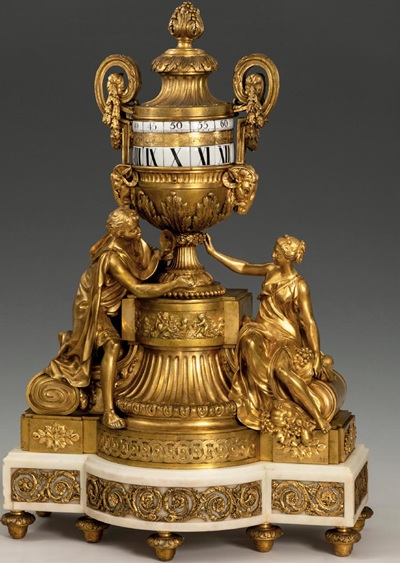
During the installation of the new single water supply pipeline of Eretria, a part of a house of the Late Classical period (mid 4th century BC) was found in the town of Eretria, which preserves a pebbled floor with a central representation of two Satyrs.
The building in question is located in the core of the urban fabric of the ancient city, close to the sanctuary of Daphnephorus Apollo, the “Quarter of the Panathenaic Amphorae” and the “House of the Mosaics”, where houses of the 4th century BC have been investigated in the past, decorated in many cases with elaborate pebbled mosaic floors.
The excavation revealed a four-sided room of almost square plan, with internal dimensions of 3.50m x 3.55m, which is defined to the south and east by walls. On the other sides (north and west) it was not possible to reveal the walls of the room, due to the limited extent of the excavation trench and the presence of the municipal roadway.
Inside the room, a mosaic floor made of natural pebbles, small in size and white in colour, which preserves a central medallion, 1.13m in diameter, with a representation of Satyrs, was investigated. It depicts two male figures with animal-like features (tail, horns, pointed ears). One is young and playing a double flute, while the other is bearded, older and probably dancing to the rhythms of music. Pebbles of various colours (white, black, red, yellow) have been used to render facial features or body details, the most characteristic being the hair in yellow pebbles, which give realism and liveliness to the figures in the performance.
After the completion of the excavation research and the first assessment of the archaeological data, the house and the pebbled mosaic floor probably date after the mid-4th century BC, the period when luxurious private houses appeared in ancient Eretria and follow the well-known architectural type with the central peristyle courtyard, around which the private family rooms and the public areas for official occasions and banquets were developed. Similar pebbled floors from the ‘House of the Mosaics’ have been dated to around 360-350 BC.
Following the unanimous opinion of the local Council of Monuments of Central Greece, it was decided to temporarily occupy the floor for protection reasons and to modify the passage of the water supply pipeline, so that it would not be damaged in any way and would be highlighted in the future.







Leave A Comment